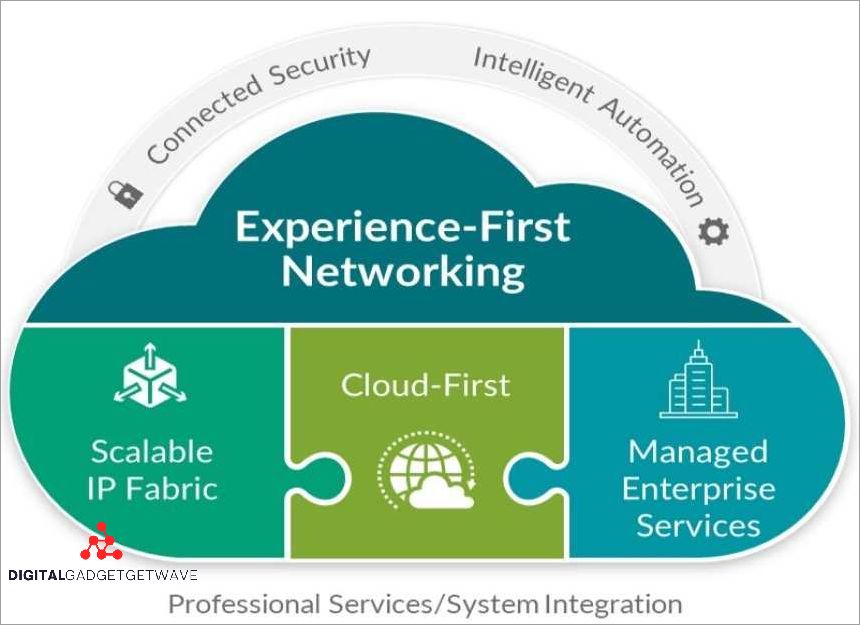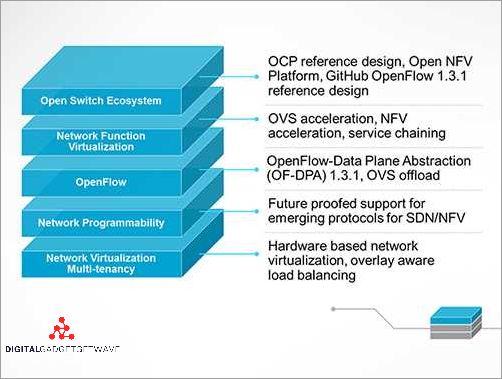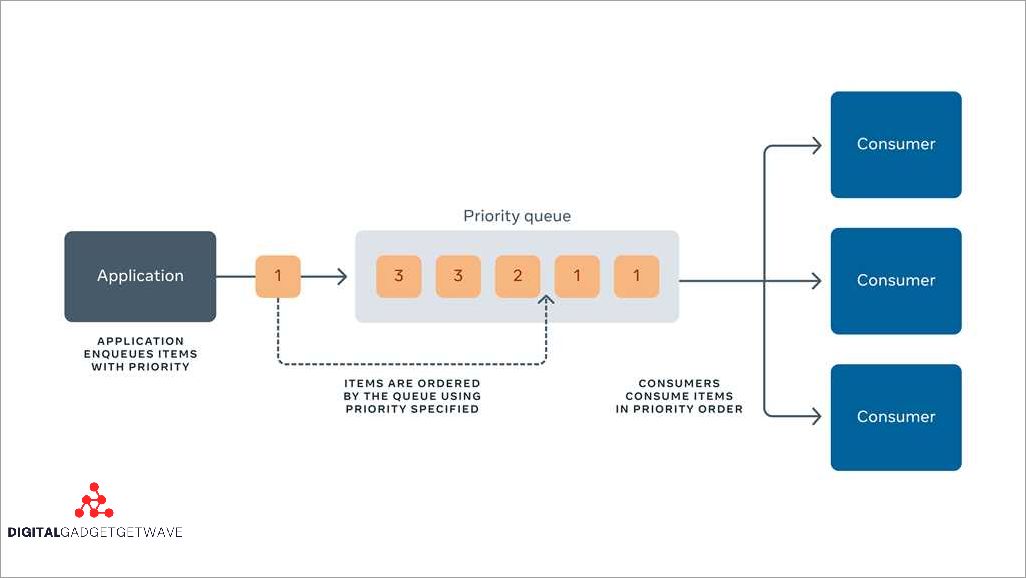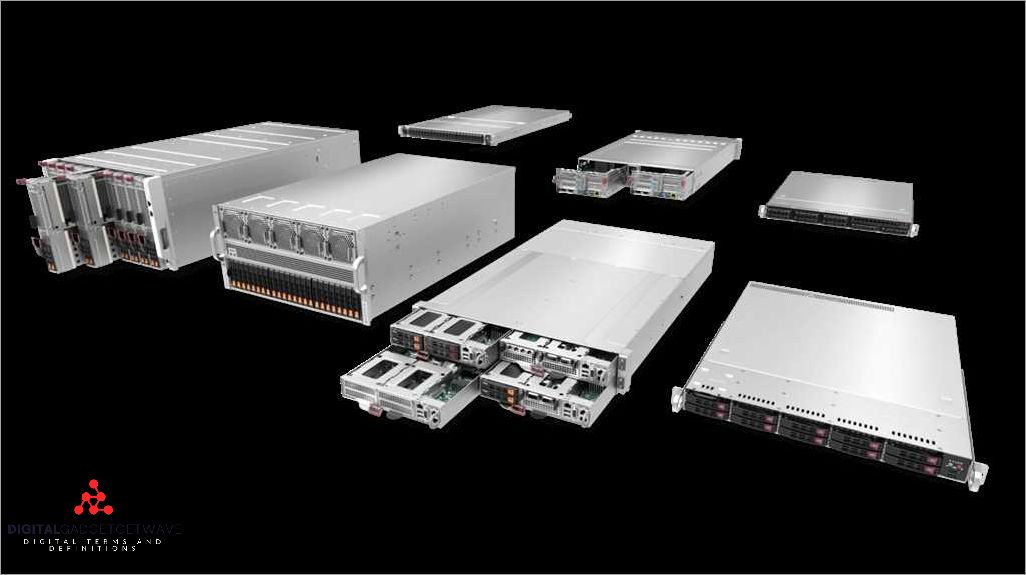
When it comes to networking, achieving optimal performance and efficiency is crucial for businesses in today’s digital landscape. With an ever-increasing reliance on technology and connectivity, organizations need innovative solutions that can handle the growing demands placed on their networks. Scalable networking solutions offer the flexibility and scalability necessary to meet these demands, while also providing a high level of reliability and security.
The key to achieving optimal performance and efficiency in networking lies in the interoperability and robustness of the network architecture. A well-designed network architecture allows for seamless connectivity between devices, applications, and systems, ensuring efficient data transfer and communication. By leveraging scalable networking solutions, organizations can easily accommodate changes and additions to their network infrastructure without sacrificing performance or introducing bottlenecks.
Bandwidth is another critical factor to consider when it comes to achieving optimal performance and efficiency. Scalable networking solutions provide the necessary bandwidth to support high-volume data transfer, enabling faster and more efficient communication between devices. This ensures that businesses can keep up with the increasing demands of data-intensive applications and workflows.
Virtualization is another innovative feature offered by scalable networking solutions that enhances performance and efficiency. By virtualizing network resources such as switches, routers, and firewalls, organizations can achieve higher levels of flexibility and scalability. Virtualization allows for efficient resource allocation and load balancing, ensuring that network traffic is distributed evenly and minimizing latency.
Finally, security is a crucial consideration when deploying scalable networking solutions. With an increasing number of threats and attacks targeting network infrastructure, organizations need robust security measures to protect their data and sensitive information. Scalable networking solutions provide advanced security functionalities such as firewalls, intrusion detection systems, and encryption protocols to ensure the integrity and confidentiality of network communications.
In conclusion, scalable networking solutions offer a comprehensive approach to achieving optimal performance and efficiency in today’s interconnected world. By providing flexible and scalable architectures, high bandwidth, virtualization capabilities, and robust security measures, these solutions empower organizations to meet the growing demands on their networks while ensuring reliability and performance.
Contents
- 1 Scalable Networking Solutions
- 2 Achieve Optimal Performance
- 3 Ensure Efficient Operations
- 4 FAQ about topic “Scalable Networking Solutions: Unlocking Peak Performance and Efficiency”
- 5 What are the benefits of scalable networking solutions?
- 6 How can scalable networking solutions help businesses achieve optimal performance?
- 7 What challenges can arise when implementing scalable networking solutions?
- 8 Are there any specific industries that can benefit from scalable networking solutions?
- 9 What are some key features to look for in scalable networking solutions?
Scalable Networking Solutions

Scalable Networking Solutions play a crucial role in modern enterprises that rely heavily on digital communication. These solutions are designed to address the growing demands of connectivity, bandwidth, and performance in an efficient and reliable manner. By utilizing various technologies and methodologies, organizations can optimize their network architecture to achieve optimal performance and efficiency.
One of the key aspects of scalable networking solutions is latency optimization. By reducing the delay between data transmission and reception, organizations can ensure faster and more efficient communication. This is especially important for real-time applications such as video conferencing or online gaming where even a slight delay can significantly impact the user experience.
Security is another critical component of scalable networking solutions. With the increasing number of cyber threats and attacks, organizations need robust security measures to protect their sensitive data. By implementing strong encryption protocols, firewalls, and intrusion detection systems, organizations can ensure the confidentiality and integrity of their network.
Scalable networking solutions also focus on interoperability and redundancy. Interoperability ensures that different devices and systems can seamlessly communicate with each other, regardless of the manufacturer or protocol used. Redundancy, on the other hand, provides backup systems and components to ensure continuous operation even in the case of failures or outages.
Load balancing is an important technique used in scalable networking solutions to distribute network traffic evenly across multiple servers or resources. This helps organizations maximize resource utilization and improve the overall performance and reliability of their network. Additionally, the use of virtualization technologies enables organizations to create multiple virtual networks on a single physical infrastructure, further enhancing scalability and flexibility.
Efficiency and modularity are also essential aspects of scalable networking solutions. By designing modular network architectures, organizations can easily add or remove components as needed, without disrupting the entire network. This allows for easier scalability and upgrades. Furthermore, by optimizing the use of resources and minimizing wastage, organizations can achieve higher efficiency in terms of bandwidth utilization and energy consumption.
In conclusion, scalable networking solutions offer a wide range of benefits including improved performance, reliability, security, and efficiency. By addressing the challenges of connectivity and bandwidth, organizations can ensure seamless communication and enhance their operational capabilities. Moreover, with the continuous advancements in technology, scalable networking solutions will continue to evolve, enabling organizations to adapt to the ever-changing digital landscape with ease.
Achieve Optimal Performance

To achieve optimal performance in a scalable networking solution, it is important to consider various factors such as security, efficiency, and reliability. Implementing a robust security architecture ensures that data transmission is protected from unauthorized access and potential threats. Interoperability, on the other hand, allows different networking devices and protocols to work together seamlessly, enabling better performance and flexibility in the overall network.
Performance optimization plays a crucial role in achieving optimal performance. This includes techniques such as virtualization, load balancing, and bandwidth management. By utilizing virtualization technologies, multiple virtual instances can run on a single physical server, increasing efficiency and scalability. Load balancing distributes network traffic evenly across multiple servers, minimizing latency and ensuring better connectivity. Effective bandwidth management maximizes the utilization of available bandwidth, enhancing network performance.
Modularity and innovative architecture designs also contribute to achieving optimal performance. A modular network design enables the network to be easily scalable and adaptable to changing requirements. Innovative architectures, such as software-defined networking (SDN), allow for centralized management and control of the network, improving efficiency and flexibility.
Redundancy and reliability are essential in maintaining optimal performance. Redundant network devices and connections provide backup options in case of failures, minimizing downtime and ensuring continuous connectivity. Reliable networking components and technologies offer stable and consistent performance, allowing for efficient data transmission.
In conclusion, achieving optimal performance in a scalable networking solution involves considering various factors such as security, interoperability, performance optimization, modularity, reliability, and innovative architecture designs. By implementing these elements, organizations can enhance their network’s efficiency, scalability, and performance.
High-Speed Connectivity

When it comes to any networking solution, high-speed connectivity is crucial for achieving optimal performance and efficiency. In today’s fast-paced world, businesses and organizations rely heavily on the constant flow of data to ensure smooth operations and seamless communication. The demand for innovative and reliable networking solutions has never been greater.
High-speed connectivity offers a multitude of benefits, including improved productivity, reduced latency, and increased efficiency. By providing a robust and scalable network infrastructure, organizations can handle heavy workloads, support bandwidth-intensive applications, and easily accommodate future growth.
Redundancy is a key aspect of high-speed connectivity, ensuring that if one connection fails, there are backup options available. This redundancy enhances the reliability and robustness of a network, allowing for uninterrupted operations and seamless data transfer. Additionally, advanced security measures can be implemented to protect sensitive information and prevent unauthorized access.
Interoperability is another important factor in achieving high-speed connectivity. With the increasing complexity of networks, the ability to seamlessly integrate different devices and systems is essential. By ensuring compatibility and ease of communication between various components, organizations can maximize their network’s performance and efficiency.
Virtualization and load balancing techniques can further optimize high-speed connectivity. These technologies allow for the efficient allocation of network resources, ensuring that bandwidth is distributed effectively and consistently. This results in improved performance, reduced latency, and enhanced user experience.
The modularity and flexibility of networking solutions also contribute to high-speed connectivity. As business needs evolve, the ability to easily upgrade or expand the network is crucial. Scalable networking solutions enable organizations to adapt to changing requirements without disrupting operations.
In conclusion, high-speed connectivity is a critical aspect of any networking solution. By embracing innovative technologies, ensuring redundancy and security, and optimizing performance, organizations can achieve optimal efficiency and reliability. High-speed connectivity enables seamless communication, efficient data transfer, and supports the growing demands of modern businesses and organizations.
Load Balancing Solutions

Load balancing solutions also prioritize security by ensuring that traffic is evenly distributed and preventing any single resource from becoming a target for malicious attacks. This interoperability with security solutions helps protect the network from potential threats and maintain data integrity.
In conclusion, load balancing solutions offer an innovative approach to optimizing network performance and efficiency. By intelligently distributing network traffic, these solutions enhance scalability and flexibility while maximizing resource utilization. With features such as redundancy, bandwidth optimization, virtualization, and security, load balancing solutions provide a reliable and robust network architecture for businesses of all sizes.
Ensure Efficient Operations
To achieve efficient operations in a networking environment, it is crucial to address various factors such as latency, scalability, redundancy, modularity, connectivity, and flexibility. These factors play a significant role in optimizing the performance and efficiency of the network.
Latency, the delay between data transmission and receipt, can greatly impact the overall performance of a network. By implementing scalable networking solutions, organizations can minimize latency and ensure a smooth flow of data in real-time.
Virtualization is another key aspect to consider for efficient operations. By virtualizing network resources, organizations can achieve greater flexibility and utilize resources more effectively. Virtualization also enables load balancing, which helps distribute network traffic evenly, improving performance and reliability.
Redundancy is essential in network architecture to ensure uninterrupted operations. By implementing redundant components, such as multiple switches or routers, organizations can minimize the risk of single points of failure. This redundancy enhances the robustness and reliability of the network.
Modularity allows for a more efficient and cost-effective network design. By separating network components into modular units, organizations can easily scale their network as needed. This modularity ensures that the network can adapt to changing requirements without significant disruption.
Connectivity and interoperability are vital for efficient operations. Organizations need networking solutions that seamlessly integrate with existing systems and can facilitate data exchange between different applications or devices. An innovative and open architecture is necessary to achieve seamless connectivity and interoperability.
Efficiency also relies on optimizing bandwidth usage. Load balancing and traffic management technologies can help distribute network traffic efficiently, preventing congestion and maximizing the available bandwidth. This optimization ensures that network resources are utilized effectively, leading to improved performance.
Security is another critical aspect of efficient networking operations. By implementing robust security measures, such as firewalls and encryption protocols, organizations can safeguard their data and prevent unauthorized access. A secure network minimizes the risk of breaches or data loss, ensuring efficient operations.
In summary, ensuring efficient operations in a networking environment requires a combination of factors, including scalability, redundancy, modularity, connectivity, and security. By addressing these aspects and utilizing innovative networking solutions, organizations can achieve optimal performance, reliability, and efficiency.
Network Monitoring and Analysis

Network monitoring and analysis play a crucial role in ensuring the efficient and reliable operation of a network. By continuously monitoring the network, organizations can identify and address performance issues, such as latency or bandwidth constraints, promptly. This proactive approach enables the network to maintain optimal performance levels and ensure smooth connectivity for users.
Robustness and redundancy are essential aspects of network monitoring and analysis. Implementing redundant network components and monitoring tools helps to minimize the likelihood of network failures, ensuring that critical data and services remain available. Additionally, network monitoring tools can detect and alert administrators of any potential vulnerabilities or security breaches, enhancing the overall reliability and security of the network.
Innovative network monitoring and analysis solutions offer modularity and scalability, enabling organizations to adapt and grow their networks as needed. These solutions can easily integrate with existing networking architectures and provide seamless interoperability with various devices and systems. This flexibility enhances the ability to optimize network performance and achieve efficient resource allocation.
Efficiency and optimization are core objectives of network monitoring and analysis. By closely monitoring network traffic and performance metrics, organizations can identify areas where improvements can be made, such as load balancing or bandwidth allocation. With real-time insights, network administrators can make data-driven decisions to optimize network resources, enhance performance, and ensure an optimal user experience.
Virtualization technologies play a vital role in network monitoring and analysis. By virtualizing network resources, organizations can achieve increased scalability and flexibility, enabling the network to adapt to changing demands. Virtualization also offers the opportunity for advanced network monitoring and analysis techniques, such as network slicing or traffic shaping, further improving performance and efficiency.
In conclusion, network monitoring and analysis are critical components of a reliable and efficient networking solution. By leveraging innovative tools and technologies, organizations can enhance the reliability, scalability, and security of their networks, while optimizing performance and efficiency. Continuous monitoring, robustness, redundancy, and virtualization are key elements to achieve a stable and high-performing network architecture.
Cloud-Based Networking Solutions
Cloud-based networking solutions offer an innovative approach to building scalable and efficient networks. These solutions leverage the modularity and virtualization of cloud architectures to provide robustness, scalability, and flexibility to modern networking infrastructures.
One of the key advantages of cloud-based networking solutions is their ability to handle high volumes of traffic and distribute it effectively through load balancing. This ensures optimal performance and bandwidth utilization, reducing latency and improving connectivity for end users.
Security is also a critical aspect of cloud-based networking solutions. By implementing robust security measures, such as encryption and authentication protocols, these solutions protect data and resources from unauthorized access, ensuring the confidentiality and integrity of network communications.
Interoperability is another key feature of cloud-based networking solutions. These solutions enable seamless integration with various networking devices and technologies, allowing organizations to leverage existing infrastructure investments and easily deploy new services and applications.
Cloud-based networking solutions also offer high reliability and redundancy. By distributing network functions across multiple virtualized environments and physical locations, these solutions minimize the risk of single points of failure and ensure continuous network operation even in the event of hardware failures or network disruptions.
Furthermore, the efficiency of cloud-based networking solutions is enhanced through intelligent resource allocation and optimization techniques. These solutions dynamically allocate resources based on demand, ensuring efficient utilization of computing and networking resources and reducing costs.
In summary, cloud-based networking solutions provide an innovative and scalable approach to building efficient and secure networks. With their modularity, virtualization, and interoperability, these solutions offer improved performance, reliability, and efficiency, meeting the demands of modern networking architectures.

